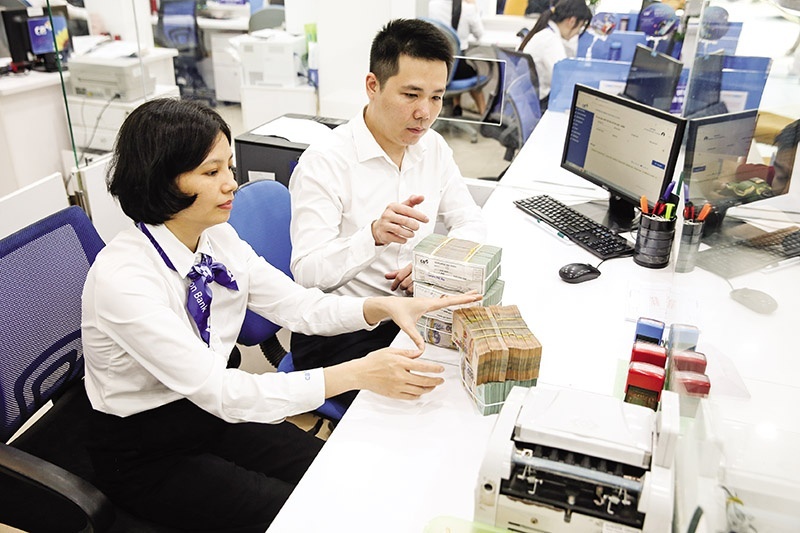Putting banks on an even keel

Some banks scaled down the interest rate for one-month deposits to just 5 per cent per year. Would the move adversely affect depositors?
Some banks pulling down their deposit rates in the last months has reflected banking sector’s enhanced liquidity and capital stagnation began to appear. In the past years, the lending/borrowing rate often exceeded 100 per cent, now it slid to 85-90 per cent only. Albeit banks have remarkably cut down the interest rate, people’s deposits into banks continue to jump.
Besides, since bank lending rates are sharply declining, keeping the mobilising rate stable could bring losses. In my view, the State Bank of Vietnam would not further drive down the mobilising rate until the year’s end amid current inflation pace.
In fact, around 6 per cent, per year mobilising rate applicable to from one to six month deposits may be lower than the inflation target. However, for deposits of longer term from above one year the mobilising rate ranges from 7 to 8 per cent, per month. The deposit interest rate would still remain real positive then.
Would removing mobilising cap be a smart move in the current context of ample capital sources at banks?
To remove mobilising cap, one essential factor is banking and financial market stability.
In current context, the financial market would be in a mess if we removed the mobilising cap since some underperforming banks have yet to be radically tackled. If the deposit cap was removed, these banks might push up mobilising rate to high levels to lure customers, affecting the whole system stability.
Besides, though the SBV has applied the deposit cap, banks could scale down the rate based on their situation.
In the first half of 2013, small banks posted positive credit growth while some bigger players like Vietcombank did not. Some worried the capital flow did not serve production. What is the case?
In fact, several big banks also had positive credit growth. For instance, BIDV’s credit expanded 6.5 per cent in the first six months and we expect a 16 per cent full-year credit growth with the State Bank permission.
It was true that in the past months some banks had boosted personal lending for higher credit growth, but downgrading lending standards would be unlikely since it is perilous to banks’ security.
World experiences show that banks even strive to tighten lending requirements amid economic uncertainties.
What the stars mean:
★ Poor ★ ★ Promising ★★★ Good ★★★★ Very good ★★★★★ Exceptional
Latest News
More News
- The promotion of ESG via banking (November 21, 2024 | 09:32)
- Standard Chartered committed to Vietnam’s financial success (November 21, 2024 | 09:24)
- Full ESG adoption the priority for Agribank (November 21, 2024 | 09:07)
- Banks entice youth with tech advances (November 21, 2024 | 08:00)
- ESG represents a shift towards sustainability for banks (November 20, 2024 | 13:00)
- GGGI supports Vietcombank’s debut of $80 million green bonds (November 20, 2024 | 11:20)
- SHB and the ESG journey: creating social value in every step (November 19, 2024 | 15:00)
- Banking sector contributes to ESG, green growth, and sustainable development (November 19, 2024 | 14:42)
- ESG implementation in banking: from awareness to action (November 19, 2024 | 12:08)
- VIR hosts 'ESG in Banking: Leading Through Implementation' conference (November 19, 2024 | 11:14)




















 Mobile Version
Mobile Version